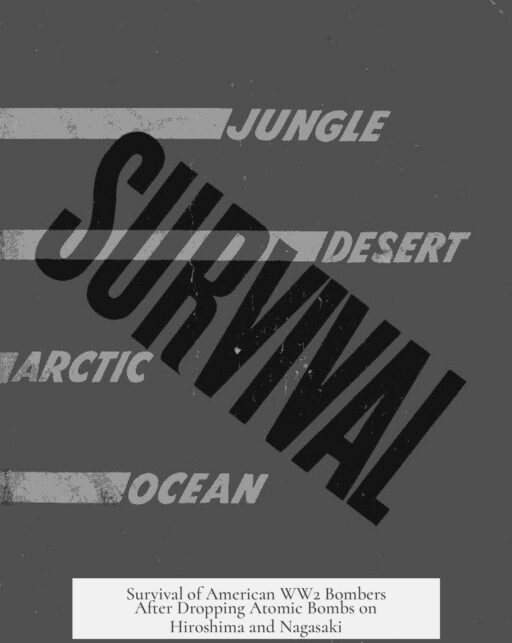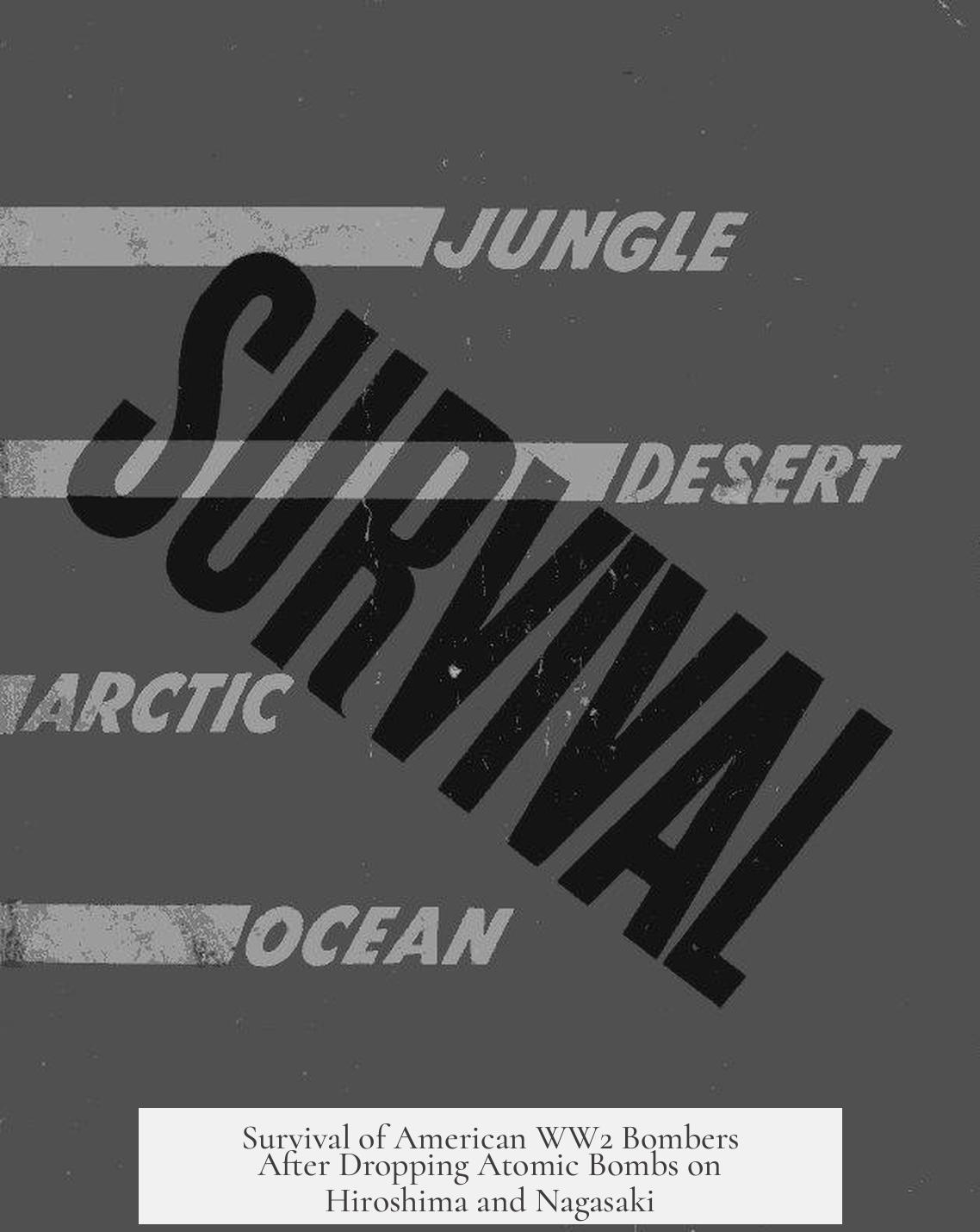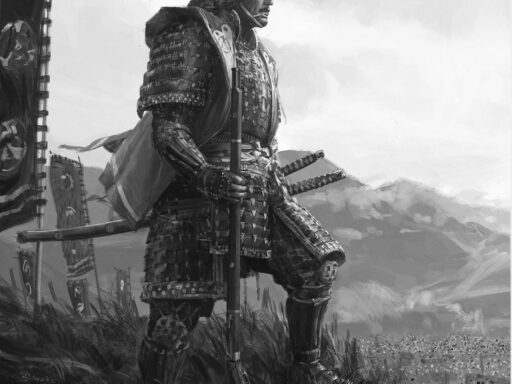The American bombers that dropped the atomic bombs on Hiroshima and Nagasaki survived by maintaining a sufficient distance from the blast and employing precise flight maneuvers to avoid immediate destruction from the shockwave and thermal effects. The B-29 bombers, known as Enola Gay and Bockscar respectively, were approximately 10.5 miles away when the bombs detonated, which significantly reduced blast damage. The execution combined altitude, speed, and sharp evasive actions to minimize the lethal impact on the crew and aircraft.
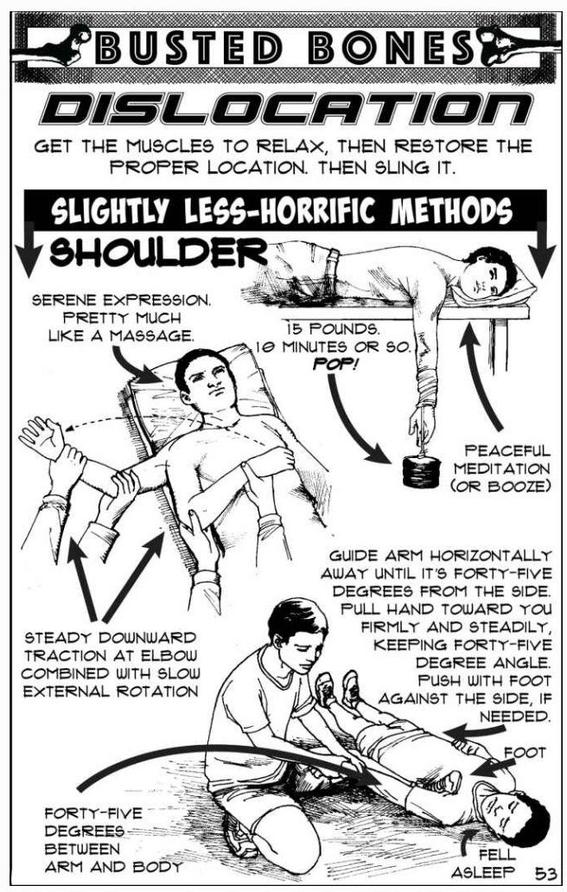
The blast radius from a World War II atomic bomb, typically between 15 to 20 kilotons of TNT equivalent, creates a powerful shockwave. However, shockwaves weaken rapidly with distance and through their passage in the atmosphere. For the Hiroshima bomb, the shockwave in the air caused the plane to experience a 2.5 G-force acceleration. This was strong enough to jolt the plane and be mistaken for flak by the crew but insufficient to damage or destroy the bomber. A second shockwave came about two seconds later, reflected off the ground. Despite this, the bombers safely rode out these waves due to strategic distancing.
The bomb dropped on Hiroshima was timed and designed to detonate approximately 45 seconds after release. This delay was critical. The pilot immediately initiated a sharp, 155-degree diving turn to maximize the distance between the bomber and the blast point. The bomb did not simply fall vertically; it retained forward momentum from the plane’s initial velocity. This meant the aircraft had to travel in nearly the opposite direction at full power after release. The bomber thus reached around 10.5 miles away horizontally and vertically by detonation time, placing it just far enough to avoid crippling damage from the explosion’s shockwave.
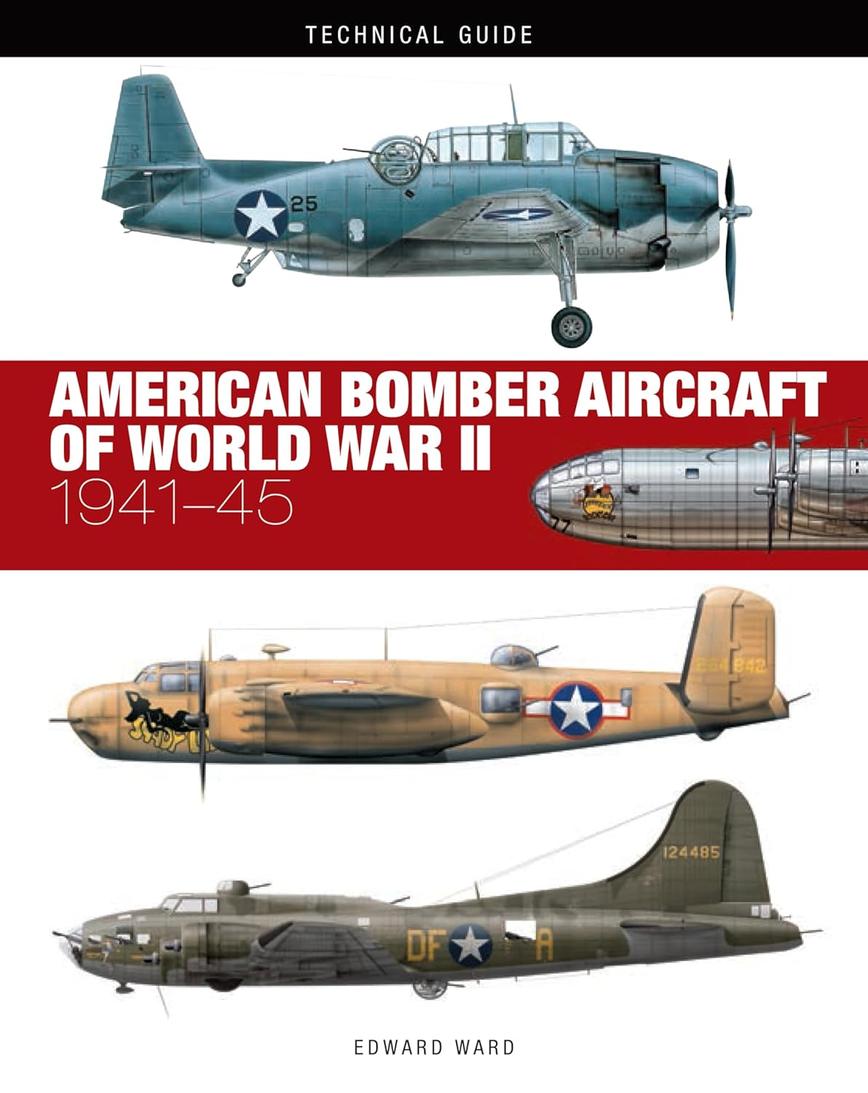
The bombs themselves were designed with stability in descent in mind. They were equipped with “California” stabilizers—squared ends without traditional parachutes—to reduce turbulent spinning that could damage the bomb’s delicate internal mechanisms. While some witness accounts refer to parachutes, these are likely confusion with measurement devices dropped in the vicinity to record blast data. This design helped ensure the bomb reached the proper altitude for detonation without endangering the aircraft by slowing it too much, which would have reduced the distance between the bomber and blast.
In later years, for larger and multi-megaton bombs, survival techniques advanced. The bigger bombs usually employed large parachutes to slow descent, increasing detonation time after release, and bombers became faster jet aircraft capable of outrunning or avoiding the blast effects. The early World War II B-29s, propeller-driven and less powerful, relied heavily on precise timing and maneuvering.
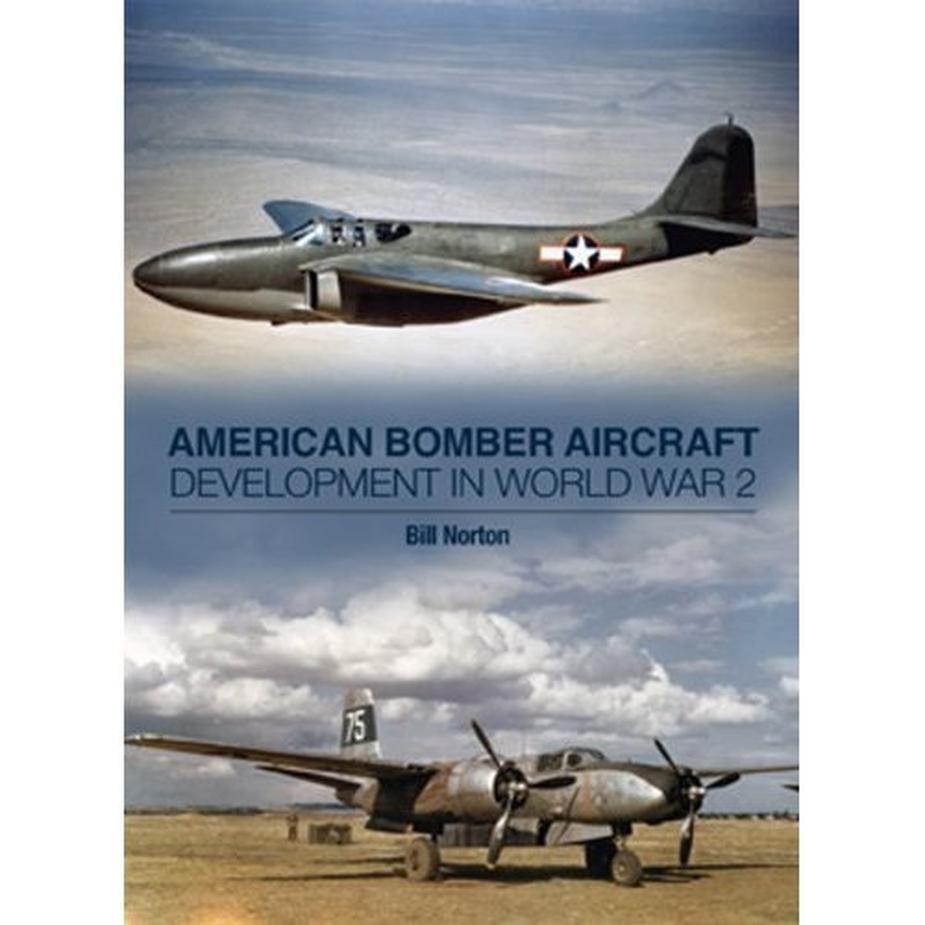
Thermal radiation presented additional challenges beyond the blast for larger bombs. The Tsar Bomba, a 50-megaton Soviet device, demonstrated that while planes could withstand shockwaves, heat from thermal radiation posed a risk many miles away. Crews reported heat causing dust inside planes to ignite and occasional burns. For such massive bombs, planes were painted highly reflective white to mitigate heat absorption. Though irrelevant to the Hiroshima and Nagasaki missions, this illustrates evolving challenges in nuclear delivery stages.
- Hiroshima and Nagasaki bombers maintained a 10.5-mile distance to survive.
- Bombs detonated about 45 seconds after release at predetermined altitudes.
- Pilots executed sharp 155o turns to outrun the blast path.
- Bomb designs emphasized descent stability without heavy parachutes.
- Larger bombs later required parachutes and faster jets for crew survival.
- Thermal radiation becomes a prominent danger with very large nuclear bombs.
How Did the American WW2 Bombers Survive Dropping the Atomic Bombs on Hiroshima and Nagasaki?
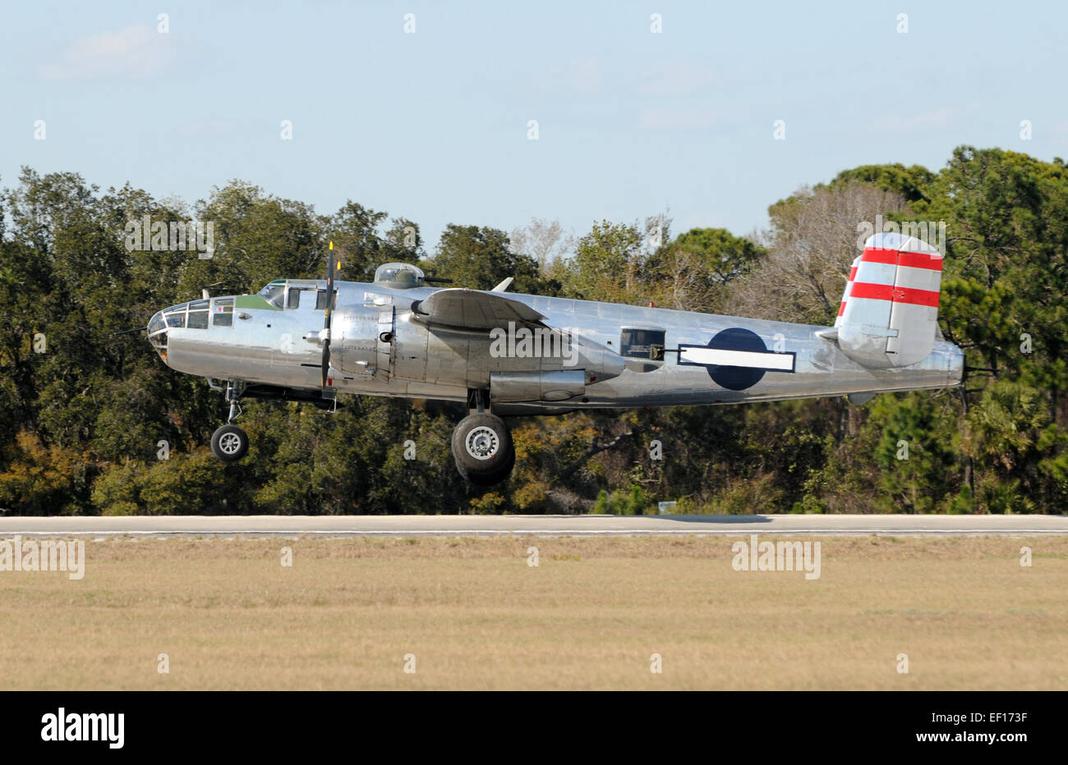
The simple answer: The planes survived because they carefully planned the drop to be far enough away, at just the right speed and altitude, so the blast—though absolutely massive—didn’t destroy or critically damage them. The crews performed sharp, fast turns after release, dodging the worst of the shockwave and heat. In other words, they got out of town quick.
Now let’s unpack this fascinating slice of World War II history. How exactly did those brave crews pull off delivering weapons that could flatten entire cities… and live to tell the tale?
Going Beyond the Blast Radius: What Does It Even Mean?
The phrase “blast radius” sounds straightforward, but it’s actually a bit fuzzy. When we talk about surviving an atomic bomb, what counts is whether the blast is *damaging* enough to wreck the aircraft—not just whether the plane is somewhere inside a theoretical circle of destruction.
At Hiroshima, the bomb was around 15 kilotons of TNT equivalent. That’s mind-blowingly powerful, but the B-29 bomber was roughly 10 miles away when the bomb exploded. This distance mattered immensely. By the time the shockwave reached the plane, it was weakened—enough to shake the aircraft fairly hard, but not enough to rip it apart.
Sounds like a roller coaster, right? The plane rocked with about 2.5 Gs of force—imagine riding a roller coaster that hits a sharp drop unexpectedly. The crew initially thought they’d been hit by flak (anti-aircraft fire). Two seconds later, a second shockwave, bounced off the ground, smacked the plane again. But by then, the plane was already making its getaway.
The Magic of Planning and Execution: Dodging Doom at 30,000 Feet
This wasn’t some wild luck moment. The scientists and military carefully engineered the drop to protect lives as much as possible.
Here’s the thing — after releasing the bomb, the pilot didn’t just fly straight ahead and hope for the best. They had precisely 45 seconds before the bomb detonated at its set altitude. During this window, the pilot executed a dramatic, 155-degree diving right turn, aiming to put as much distance as possible between the plane and the exploding bomb.
In effect, they were retracing their path but flying faster than the plummeting bomb’s forward speed. By combining speed with savvy maneuvering, they ended up roughly 10.5 miles away—not just horizontally, but accounting for altitude too—when the bomb went off. That distance was their shield.
Design Features: Not Quite Parachutes, But Close Enough to Help
If you think those bombs tumbled wildly, you’re not imagining things—but not in the way many people think.
Unlike bigger nuclear bombs from later times, the “Little Boy” and “Fat Man” bombs didn’t have conventional parachutes to slow descent. Instead, they featured squared-off ends, nicknamed “California parachutes,” designed not to slow the fall much, but to keep the bomb from spinning erratically. Erratic spins could damage the delicate internal parts that made the bomb tick.
There’s an interesting misconception among some Japanese accounts and even in fiction (say, Barefoot Gen): many believed parachutes slowed the bombs. Actually, nearby B-29s dropped scientific instruments on parachutes to measure the blast. Eyes on the ground mistook those for the bombs themselves. It’s a small, fascinating mix-up that clarifies how little public understanding there was at the time.
Scaling Up: How Do Larger Atomic Bombs Affect Bomber Survival?
You might wonder, “If 15-20 kilotons is survivable at 10 miles, what about multi-megaton bombs dropping in the Cold War era?” The survival game changes here.
Multi-megaton bombs were massive—think 1,000 times larger yields. To survive their drops, crews relied on two key tactics:
- Longer fall times: These bombs had huge parachutes to slow descent. This gave the plane more time to get far away before detonation.
- Faster planes: Unlike the propeller-driven B-29, jet-powered bombers could zoom away at nearly twice the speed, increasing the safety margin.
That combo—a slow-falling bomb and a jet speeding away—maximized distance and minimized danger.
Thermal Radiation: The Invisible Enemy to Survivors in the Sky
Surviving the blast wave is notable, but thermal radiation from a bomb is a sneaky hazard, especially with huge bombs.
The Soviets’ Tsar Bomba, the largest nuclear test ever, produced tons of heat that bothered the specially painted white-painted planes intended to reflect thermal energy.
Even then, inside the plane, dust ignited, creating smoke. Some crew members suffered light burns. The sheer brightness and heat from a multi-megaton blast can cook the aircraft from afar—not by smashing it to bits but by frying it slowly like a toaster on overdrive.
Luckily, this wasn’t an issue in WWII; the bombs were smaller. But it highlights the complexity of surviving bomb delivery beyond just distance.
Wrapping It Up: The Art of Atomic Bomb Delivery
Dropping atomic bombs in WWII was part science, part daring, and all chalked up to incredible preparation.
These brave crews:
- Relied on precise altitude and speed calculations to time the bomb’s detonation.
- Executed sharp, high-speed turns after release to escape the blast zone.
- Kept a safe margin—about 10 miles or more—to survive the shockwave’s brutal force.
- Understood that the bombs’ design counted on steady descent, not parachutes, to function correctly.
Would you trust that your plane could shake violently with 2.5 Gs but stay in the air? These crews did. They flew machines through shockwaves and fireballs that could erase whole cities, making history without becoming a casualty. That’s an incredible feat, both technically and humanly.
So next time you hear “blast radius,” think twice about what that means for survival. It’s not a magic circle of doom but a nuanced dance of physics, engineering, and gutsy flying.
How did the B-29 bomber survive the shockwave from the Hiroshima bomb?
The plane was about 10.5 miles away when the bomb detonated. The shockwave hit the aircraft but was greatly weakened by the atmosphere. It caused a strong jolt, but not enough to damage the bomber.
What maneuvers did the plane perform after releasing the bomb to ensure survival?
After drop, the pilot made a sharp 155º right turn and then reversed direction to increase distance from the bomb. This maneuver helped the plane reach about 10 miles away before the explosion.
Did the atomic bombs have parachutes to slow their descent?
World War II bombs did not have full parachutes, only squared ends to prevent spinning. This stability feature protected the bomb’s electronics, but they did not slow the fall significantly like parachutes do.
How did crews survive dropping much larger bombs in later years?
Larger bombs used massive parachutes to slow descent, giving planes more time to escape. Jet bombers flying faster than the B-29s also increased the distance from the blast at detonation.
What risk did thermal radiation pose to bombers with very large bombs?
For bombs in the tens of megatons, intense thermal radiation could cause burns and smoke inside the plane. Some aircraft were painted white to reflect heat, but crews still faced discomfort during tests.
